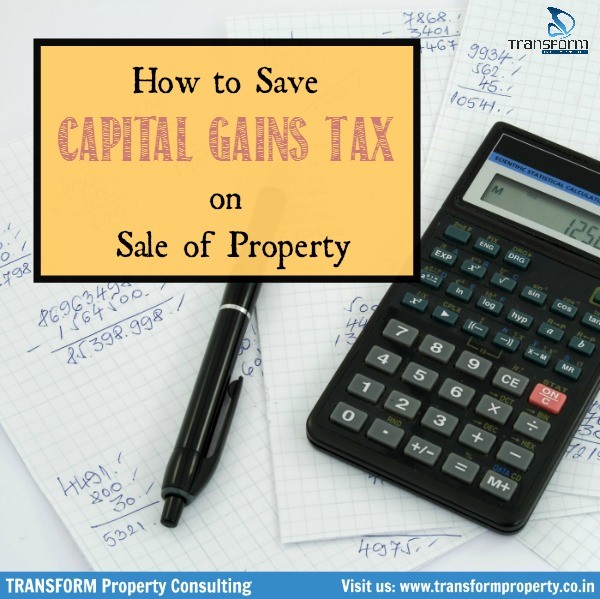Capital Gains and Your Home Sale
Post on: 12 Июнь, 2015 No Comment

What’s the best tax break available to Jane and John Q. Public? If they’re homeowners, it’s selling their house.
Homeowners already know the many tax breaks that Uncle Sam offers, most notably mortgage interest and property tax deductions. Well, he also has good tax news for home sellers: Most of them won’t owe the Internal Revenue Service a single dime.
When you sell your primary residence, you can make up to $250,000 in profit if you’re a single owner, twice that if you’re married, and not owe any capital gains taxes.
Most people are not going to have a tax obligation unless their gain is huge, says Bob Trinz, senior tax analyst for the Tax and Accounting business of Thomson Reuters.
Some sellers are surprised by this break, especially if they’ve been in their homes for a while. That’s because before May 7, 1997, the only way you could avoid paying taxes on your home-sale profit was to use the money to buy another, more-expensive house within two years. Sellers age 55 or older had one other option. They could take a once-in-a-lifetime tax exemption of up to $125,000 in profits. And in all instances, there is Form 2119 to fill out to show that you followed the rules.
But when the Taxpayer Relief Act of 1997 became law, the home-sale tax burden eased for millions of residential taxpayers. The rollover or once-in-a-lifetime options were replaced with the current per-sale exclusion amounts.
There is some logic to this law change because most people under the prior rules didn’t recognize a taxable gain, because they rolled it over into another residence, says Trinz. The change essentially makes it easier to dispose of your residence.
Still some requirements to meet
If you used pre-1997 rules for residential sales, don’t worry. That doesn’t disqualify you from claiming the exclusion on any residential sales now. The law change applies to all sales since it took effect.
Another bonus to the new rules? You don’t have to buy another home with your sale proceeds. You can use the money to travel Europe in style, buy a recreational vehicle??and drive across the country, or get all those designer shoes you never could afford.
Even better, there’s no limit on the number of times you can use the home-sale exemption. In most cases, you can make tax-free profits of $250,000, or $500,000 depending on your filing status, every time you sell a home.
Ah, but we are talking taxes here. You did notice that phrase in most cases, didn’t you? Before you put a for sale sign in the yard, you need to make sure your house-sale situation is one of those most cases.
First, the property you’re selling must be your principal residence. That means you live in it. This tax break doesn’t apply to a house or other property that you have solely for investment purposes. In those cases, the usual capital gains rules apply.
You also must live in that principal residence for two of the five years before you sell it. This is known as the use test. It also means, practically speaking, each sale must be at least two years apart.
That still leaves you room to make some money on several properties. You can sell your residence this year, pocket any gain within the tax limits and buy a new residence. Two years later, you can do the same thing, again and again, every two years.
And you no longer have to worry about that pesky prior-law reporting requirement. When your gain doesn’t exceed the limit, you don’t have to file anything with the IRS.
Second home sales take a tax hit
Owners of multiple homes, however, will now find it’s not as easy to shelter sale profit as it used to be.
A provision of the Housing Assistance Act of 2008, the bill designed primarily to provide relief to some homeowners facing foreclosure, could cost the??owners of a vacation or other type of second property — when they sell.
Previously, you could move into the second property, make it your primary residence, live there for two years and then sell it and pocket most or all of the profit.
Under the new law, however, even if you convert a second piece of real estate to your primary home, you’ll owe tax on part of the sale money based on how long the house was used as a second, rather than your main, residence.
Special rules for married couples
While a husband and wife get double the exclusion of single home sellers, couples also have some additional considerations when it comes to determining whether their sale is tax-free.
Either spouse can meet the ownership test. For example, the IRS says it’s OK if you owned the home for the past two years, but you just added your new husband to the title when you got married six months ago. Since you owned the residence for the requisite time, as joint filers, you have no problem meeting the ownership test even though your husband wasn’t an official owner for that long.
However, husband and wife must pass the use test; that is, each must live in the residence for two years. But the shared use doesn’t have to be while you file jointly. If you and your now-husband shared the home for 1. years before tying the knot and then six months as newlyweds, the IRS will allow you to claim the exemption. But if he didn’t move in until the wedding day, you’re out of tax-exclusion luck.
And while you’re learning about your new spouse, make sure you find out all about his or her previous home-sale history. The two-year eligibility rule applies to both spouses, so full home disclosure is another financial area you need to consider when getting married, says Trinz. You need to find out what you’re getting.
Under this couple requirement, if either spouse sold a home and used the exclusion within two years of the sale of any jointly owned property, the couple can’t claim the exclusion. That means if your new husband sold his town house a month before the wedding, then you’ll have to wait two years after that property’s sale date before you can dispose of your shared marital residence totally tax-free.
In some cases, a couple might be able to exclude some profit from taxation, but not the full $500,000 allowed joint filers, based on one spouse’s eligibility qualifications.
Figuring out the correct exclusion amount
OK, you, and your better half if you’re married, met the use and ownership tests, as well as the two-year previous-sale time limit. Now it’s time to do the math to avoid writing a big check to the U.S. Treasury.
As a seller, you naturally focus on how much you got for your house. That is an important number, but not the only one you’ll need when it comes to figuring out whether you’ll owe taxes on the sale.
It’s your gain, or profit, that determines the size or lack of a tax bill. In fact, you can sell your house for $1 million and still not owe Uncle Sam as long as the profit portion was not more than $250,000 or $500,000, depending on your tax filing status. If you can exclude all the gain, then you owe no taxes.

To arrive at your gain amount, you first must establish your basis in the home. For most people, says Trinz, this is what you paid for the residence and all capital improvements you’ve made, such as adding a room or finishing a basement. Also, if you sold a residence prior to the 1997 law change and rolled the profit into the home you’re now selling, you must account for that rollover amount; your basis will decrease by the amount of gain you postponed years ago.
Then you compare that basis amount to what you get from the sale, less your commissions and other expenses, says Trinz. When you subtract your cost basis in the residence, this will give you the amount of gain on the sale.
In most instances, sellers will find they made a nice profit, but not one large enough to trigger a tax bill. Some, however, could find their residences appreciated so much that the great sales prices they got ended up costing them at tax time. That’s why it’s important to accurately track anything that could affect your home’s cost??basis.
The improvements increase your basis, so a smaller portion of the selling price would be viewed as gain. Any overage is taxed at the applicable long-term capital gains rate of 15 percent or, for some sellers, zero percent.
For those people, the old rule might have been better, says Mark Luscombe, principal tax analyst at CCH, a tax publisher and software provider, but the new rule sort of rewards more frequent changes of homeownership.
Partial exclusion still a good deal
Even if you don’t meet all the home-sale exclusion tests, your tax break might not be totally lost.
When an owner sells a house because of special conditions, such as a change in health, employment or unforeseen circumstances, he or she is eligible for a prorated tax-free gain.
In such a case, the seller first calculates the fractional amount of time that he or she met the two-year use test. For example, a single homeowner is transferred to a job in another city and sells after being in the home for only a year and a half. That would be an occupancy period of 18/24 or 0.75, the number of months lived in the home divided by 24, the number of months in the two-year occupancy requirement. By multiplying the full $250,000 exclusion amount by 0.75, the seller would be eligible to exclude a sale gain of up to $187,500.
Special rules for special circumstances
Members of the military also get special home-sale consideration. Because of redeployments, soldiers often find it hard to meet the residency rule and end up owing taxes when they sell.
But a law change in 2003 exempts military personnel from the two-year use requirement, for up to 10 years, letting them qualify for the full exclusion whenever they must move to fulfill service commitments.
Another law change, this one beginning in 2008, takes into account the special circumstances that a homeowner faces when selling after a spouse dies.
Previously, to exclude the full profit amount allowed married homeowners when they sell, the surviving spouse had to sell the property in the same tax year that the husband or wife passed away. But now, an unmarried widow or widower has up to two years to sell the home and not face taxes on up to $500,000 in profit.
So quit worrying about taxes when you put your house on the market. Chances are good that Uncle Sam won’t be able to lay any claim to your hefty home-sale profit.
+ Follow Fox Business on Facebook














